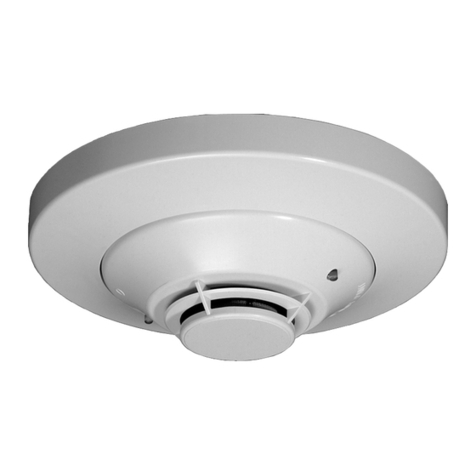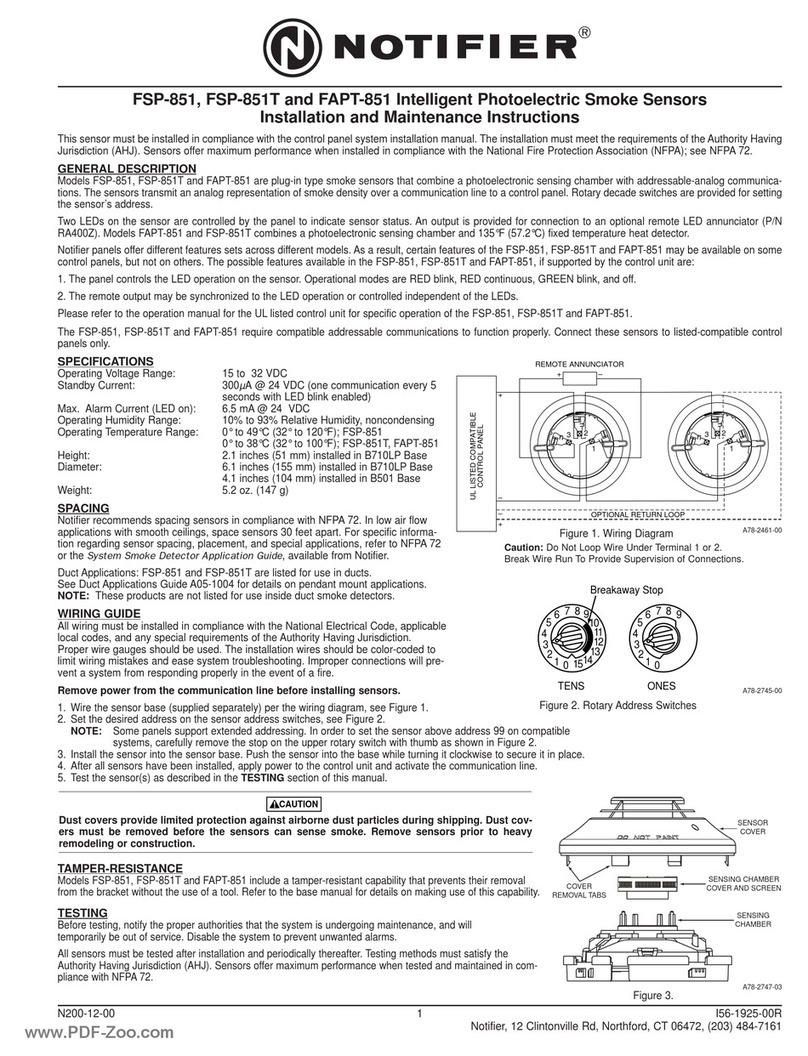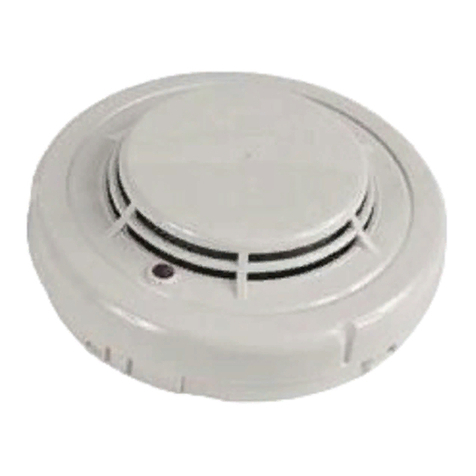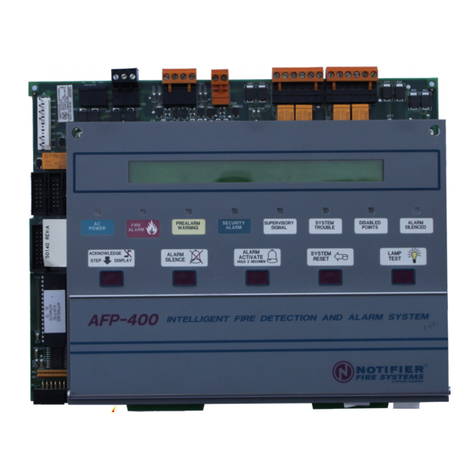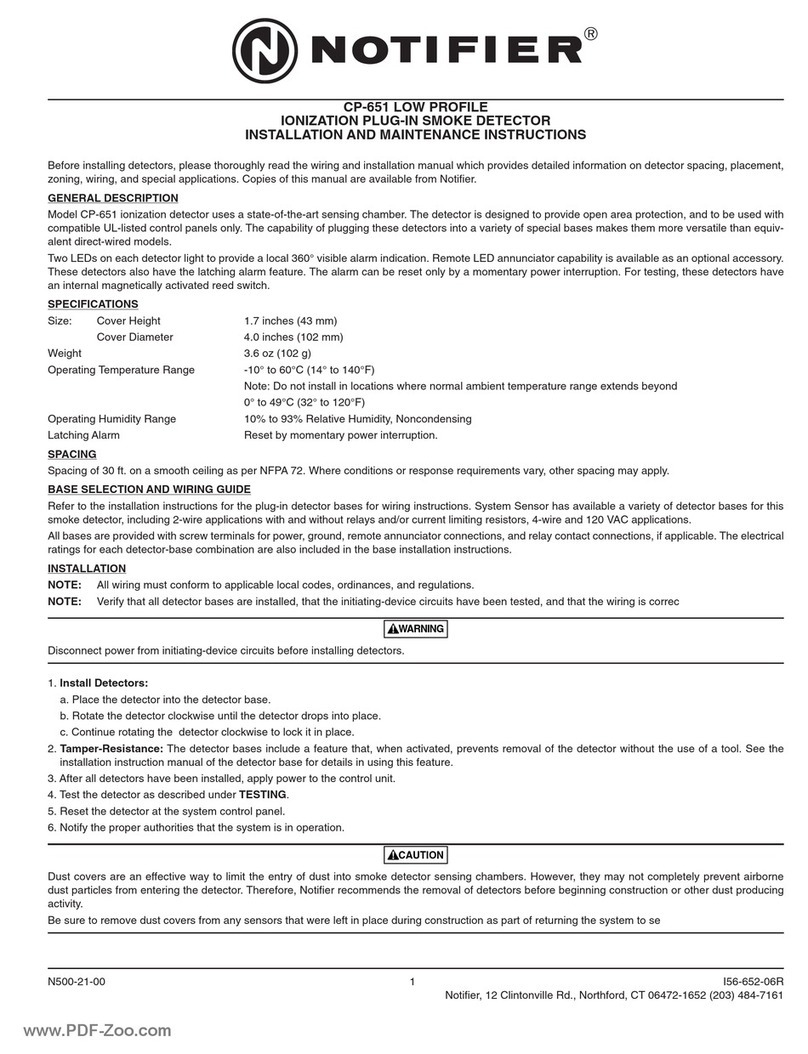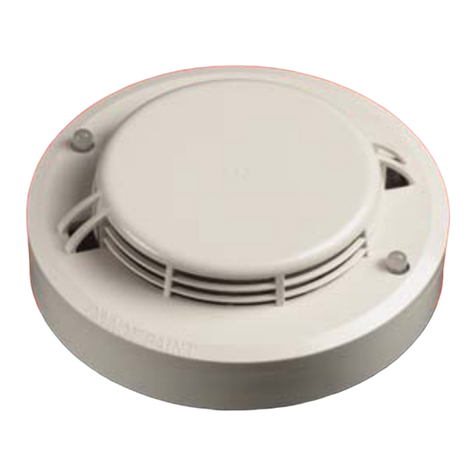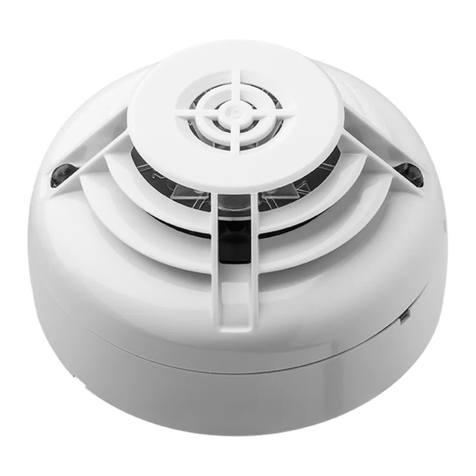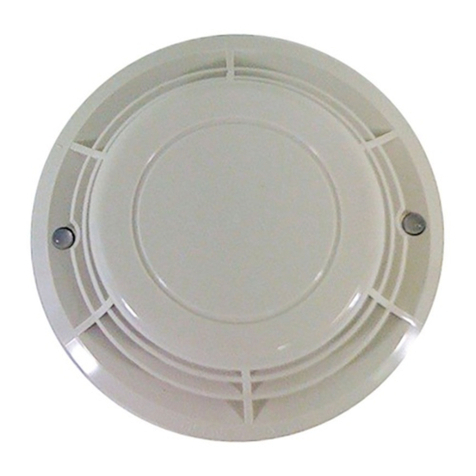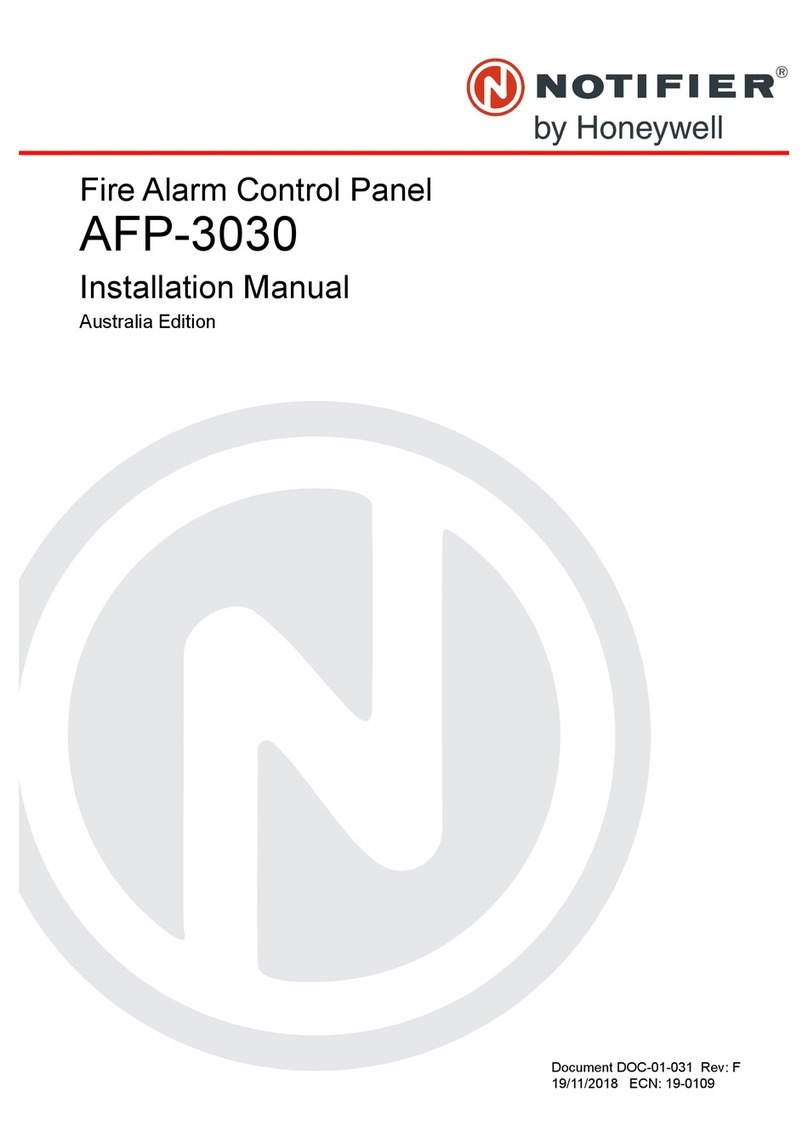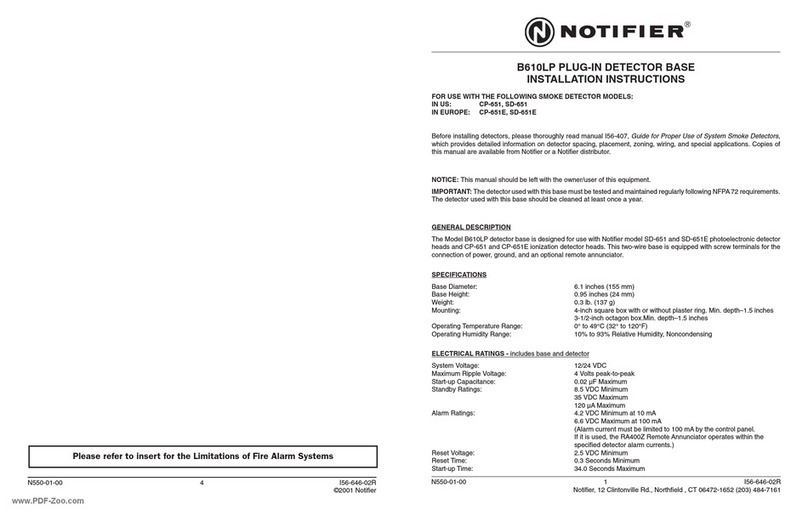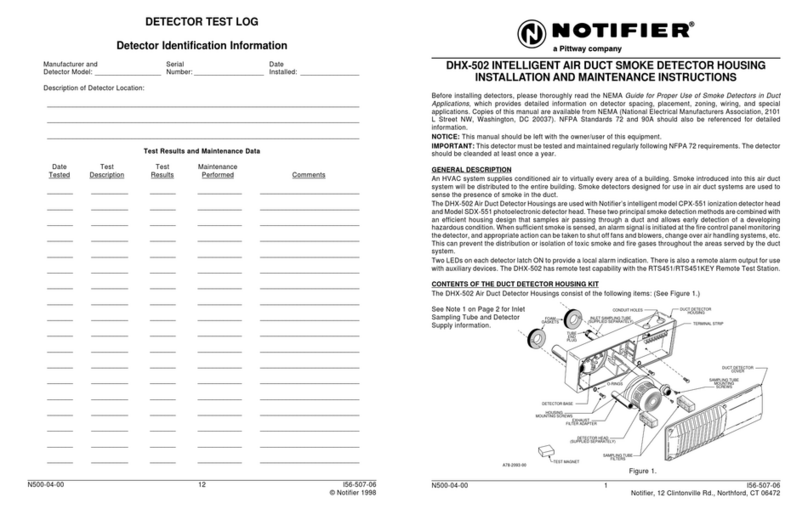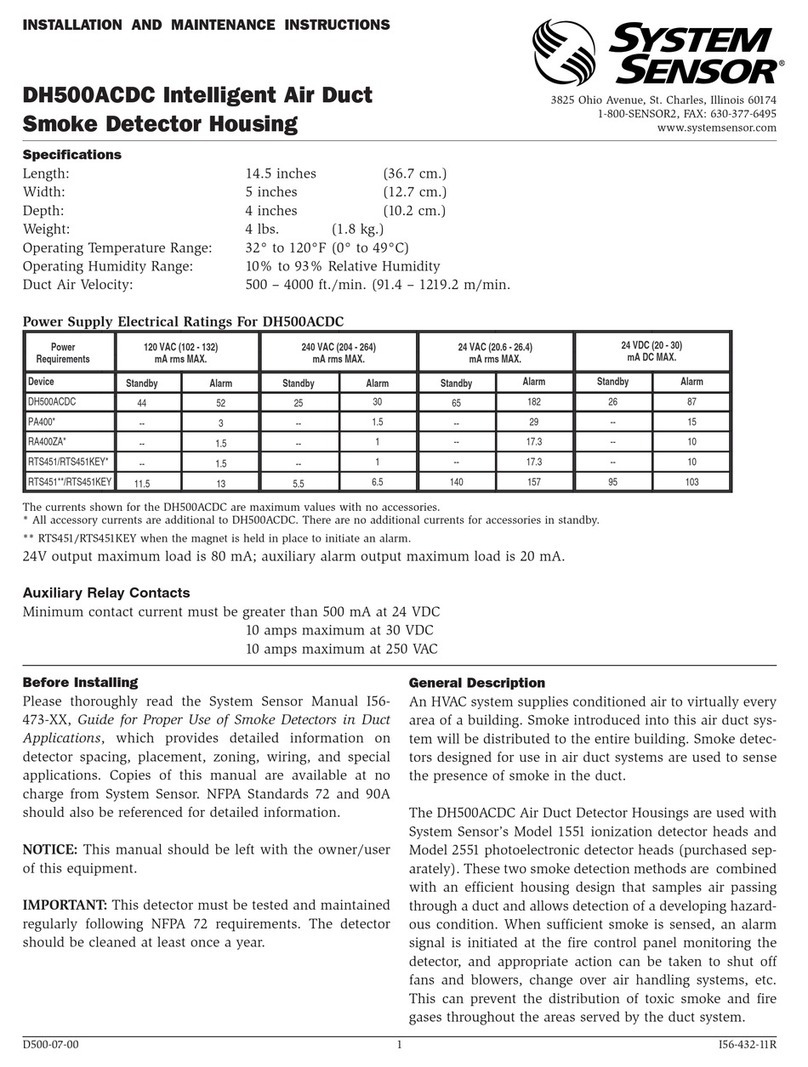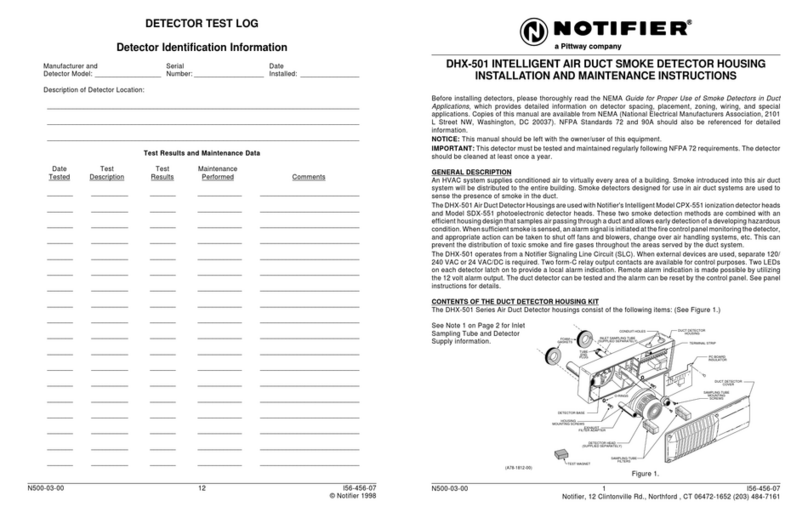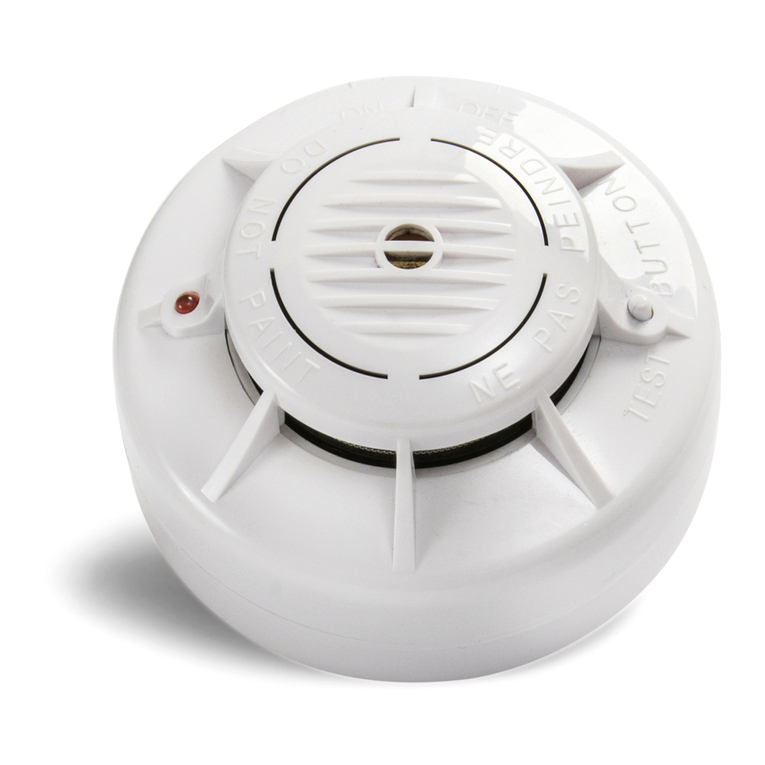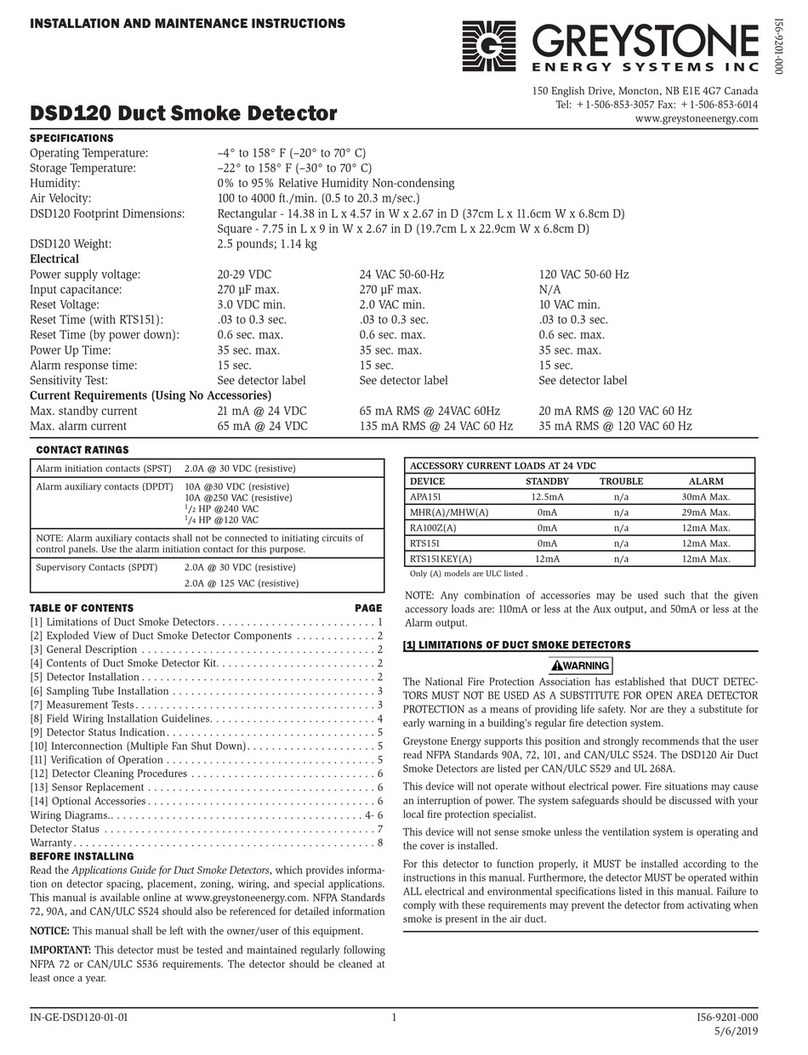
N500-05-00 4 I56-054-09R
© 2001 Notifier
Figure 5: Installing detector into base:
1. Grasp the housing with one hand and the cover with
the other. Turn the cover counterclockwise fully (approx.
30 degrees) and remove cover by pulling it away from
detector unit (see Figure 4).
2. Replace with new filter and cover assembly. The cover
is keyed so it fits in place only one way. Turn the cover
clockwise until it stops.
NOTE: The base is equipped with an optional tamperproof
feature which can be used to prevent unintentional removal
of the unit while replacing the filter.
If a clogged filter was the cause of the trouble condition,
normal detector operation should resume automatically
within five minutes. If the trouble condition persists, the
detector must be returned for repair or replacement.
Installing Detector Into Base
1. Align the detector at a right angle to the base, with the
five wires and connectors adjacent to the connector
receptacle as shown in Figure 5.
2. Plug the wired connector into the receptacle.
3. Rotate the detector into the base, making sure detector
and base keyed fit is lined up. Turn the detector clock-
wise until it snaps into place.
IMPORTANT: FSH-751 will only operate with B710HD/
B524FTXE Mounting Base.
FCC Statement
This device complies with part 15 of the FCC Rules. Operation is subject to the following two conditions: (1) This device may not cause harmful inter-
ference, and (2) this device must accept any interference received, including interference that may cause undesired operation.
Note: This equipment has been tested and found to comply with the limits for a Class B digital device, pursuant to Part 15 of the FCC Rules. These
limits are designed to provide reasonable protection against harmful interference in a residential installation. This equipment generates, uses and
can radiate radio frequency energy and, if not installed and used in accordance with the instructions, may cause harmful interference to radio
communications. However, there is no guarantee that interference will not occur in a particular installation. If this equipment does cause harm-
ful interference to radio or television reception, which can be determined by turning the equipment off and on, the user is encouraged to try to
correct the interference by one or more of the following measures:
– Reorient or relocate the receiving antenna.
– Increase the separation between the equipment and receiver.
– Connect the equipment into an outlet on a circuit different from that to which the receiver is connected.
– Consult the dealer or an experienced radio/TV technician for help.
Please refer to insert for the Limitations of Fire Alarm Systems
N500-05-00 1 I56-054-09R
Notifier, 12 Clintonville Rd., Northford, CT 06472-1653 Phone: (203)484-7161
Before Installing
This detector must be installed in compliance with the con-
trol panel system installation manual. The installation must
meet the requirements of the Authority Having Jurisdiction
(AHJ). Detectors offer maximum performance when
installed in compliance with the National Fire Protection
Association (NFPA); see NFPA 72.
General Description
The FSH-751 Smoke Detector uses a small air intake fan
and a high density replaceable filter. Air and smoke are
drawn into a photoelectric sensing chamber while airborne
particulate and water mist are removed. The address-
able-analog detector transmits an analog representation
of smoke density over a communication line to a control
panel. Rotary decade switches are provided for setting the
sensor’s address.
Two LEDs on each sensor light to provide a local, visible
sensor indication. Remote LED annunciator capability is
available as an optional accessory (Part No. RA400Z).
Notifier panels offer different features sets across different
models. As a result, certain features of the FSH-751 may be
available on some control panels, but not on others. The
possible features available in the FSH-751, if supported by
the control unit are:
1. The panel controls the LED operation on the sensor.
Operational modes are RED blink, RED continuous,
GREEN blink, GREEN continuous, and off.
2. The remote output may be synchronized to the LED
operation or controlled independent of the LEDs.
Please refer to the operation manual for the UL listed con-
trol unit of specific operation of the FSH-751.
The FSH-751 smoke detector is intended for use in nor-
mal environmental conditions, where dust and other
airborne particulate are present at elevated levels.
These elevated levels tend to cause false alarms and
high maintenance in standard detectors. FSH-751 pro-
vides a protective enclosure for a photoelectric smoke
detector chamber and allows smoke detection in areas
that tended to use exclusively heat detection.
FSH-751 requires compatible addressable communica-
tions to function properly. Connect this detector to
listed-compatible control panels only.
Spacing
Notifier recommends spacing detectors in compliance
with NFPA 72. In low air flow applications with smooth
ceilings, space detectors 30 feet apart. For specific infor-
mation regarding sensor spacing, placement, and special
applications, refer to NFPA 72 or the System Smoke Detector
Application Guide available from Notifier.
Duct Applications
FSH-751 is listed for use in ducts. See Duct Applications
Guide A05-1004 for details on pendant mount applica-
tions.
FSH-751 Intelligent Photoelectronic Smoke Detector
Installation and Maintenance Instructions
Specifications
Operating Voltage Range: 15 to 32 VDC
Detector Current: 300 µA @ 24 VDC (one communication every 5 sec. with LED enabled)
Auxiliary Power Supply Voltage: 15 to 30 VDC filtered; Ripple voltage may not drop below 15 volts.
Auxiliary Power Supply Current – Peak: 123 mA max. Average: 27 mA max.
Operating Humidity Range: 10% to 93% Relative Humidity, noncondensing
Operating Temperature Range: 0° to 50°C (32° to 122°F)
Height: 2.8 inches (43 mm)
Diameter: 6.1 inches (155 mm) installed in B710HD
4.0 inches (102 mm) installed in B524FTXE
Weight: 7.3 oz. (207 g)
Compatibility: Backwards compatible with 700 and 500 series products’ protocol Mounting
Base: Requires B710HD (U.S.), B524FTXE (Europe)
www.PDF-Zoo.com

